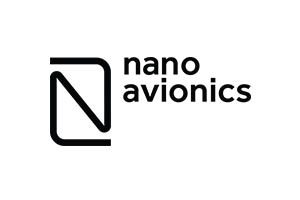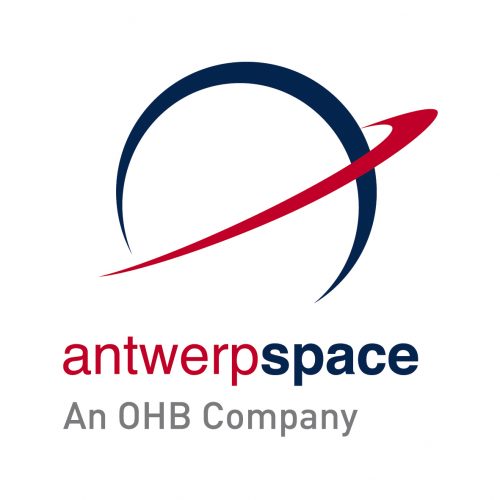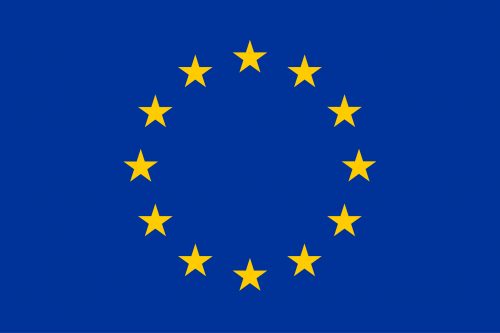Be part of the future with us!
Register now for our online product launch event on May 23rd.
6 June 2019 – NanoAvionics, an international nano-satellite missions integrator, and the consortium partners KSAT (Kongsberg Satellite Services) and Antwerp Space have been awarded EUR 10 million funding by the European Commission’s Horizon 2020, ESA’s ARTES and private investors. The funding is for the first demonstration of the pre-cursor stage of the Global Internet of Things (GIoT) nano-satellite constellation with one or more IoT/M2M (machine-to-machine) service providers as pilot customers. The consortium will not enter the IoT/M2M business directly. Instead it will offer a GIoT constellation-as-a-service in a B2B setup to existing and emerging IoT/M2M operators.
The GIoT system combines the core strengths of the consortium’s partners in a one-stop-shop offer, giving IoT/M2M service providers the means to be economically viable, globally scalable and competitive. NanoAvionics’ constellation-as-a-service will give service providers a ten-fold reduction in the cost of their global IoT/M2M communications. The GIoT system will also lower the entry barriers for IoT innovators and enable them to devise new ways of M2M communications.
The GIoT system consists of NanoAvionics’ reliable nano-satellite buses powered by chemical propulsion and enabling constellation synchronisation, launch brokerage services, global real-time connectivity enabled by KSAT’s technically mature ground stations network, Antwerp Space’s inter-satellite link via geostationary orbit (GEO) satellites and NanoAvionics’ modular and scalable mission control system.
At the end of next year, the pre-cursor stage, consisting of 2-3 of NanoAvionics’ interconnected nano-satellites, will be launched into low Earth orbit (LEO). The final GIoT constellation will form an interconnected network with 72 satellites and global real-time coverage towards the end of 2023.
Frank Zeppenfeldt, from ESA’s satellite communications group said: “We are excited to support the GIoT project because we recognise the importance that IoT/M2M and satellite connectivity play for the next level of innovation in almost every industry. ESA’s ARTES programme will fund the development of the inter-satellite link from smaller satellites in LEO to commercial GEO communication satellites, and will demonstrate low cost data-relay services.”
The funding for this innovative European project will allow NanoAvionics and partners to develop and launch the pre-cursor stage of the GIoT constellation, taking it from technology readiness to customer in-orbit testing and preparing it for commercialization and scale-up. In particular, the funding will enable NanoAvionics to upgrade its current buses with Antwerp Space’s inter-satellite link for connection with GEO satellites and testing the satellites’ compatibility with KSAT’s network. It will also let NanoAvionics enhance its modular and scalable mission control system to manage multi-satellite and multi-instrument constellations. The latter will match the various requirements and transceivers operated by different IoT/M2M service providers.
“The phenomenal support by both the European Commission and European Space Agency shows the importance of this GIoT project and their confidence in our world-class partners and NanoAvionics to deliver it,” said Vytenis J. Buzas, chief executive officer of NanoAvionics. “IoT promises to bring new levels of efficiency to transport, manufacturing and other industries but it needs real-time coverage and lowered cost. While we have seen a lot of activities in the IoT/M2M market and a lot of advancement in hardware there is a clear lack of the satellite and ground infrastructure that is required for generating downstream revenue for an IoT market expected to reach USD 3.21 billion by 2023.”
“The GIoT solution will enable global real-time connectivity for IoT/M2M service providers, and the KSAT contribution will be enabling access to KSATlite, a global ground station network optimized for SmallSat constellations,” said Arild José Jensen, KSAT vice president of global sales. “By leveraging the KSATlite network, where the corner stones are automated operations and standardisation, GIoT operators will be able to tap into a global, operational and perfectly scalable ground station as-a-service solution. Together with our partners we will facilitate continuous connectivity for the GIoT satellites, thereby providing a unique capability which will open up new opportunities for IoT/M2M service providers.”
Each nano-satellite, based on NanoAvionic’s preconfigured nano-satellite buses, has up to 10U of payload volume, allowing multiple IoT communications providers to place their M2M transceivers in them. Antwerp Space and KSAT, through their mission control and data distribution system, will connect this nano-satellite constellation with the terrestrial Internet. An Antwerp Space inter-satellite link on each nano-satellite will provide real-time connectivity with traditional GEO satellites. The GIoT constellation will send direct communications from the LEO satellites to KSAT’s global network of ground stations.
“Providing communications to low-cost IoT devices in remote regions has always been difficult and quite expensive,” said Koen Puimège, managing director of Antwerp Space. “Today’s cellular networks only provide coverage for densely populated parts of the world’s landmass, which comprises less than 20% of the total Earth surface. Equally, Earth-to-orbit transmissions via traditional satellites require expensive, energy-consuming technology. The market opportunity for this GIoT constellation is to cover the remaining 80% with low cost communication services.”
The earliest applications by IoT/M2M providers using this new generation of space-based IoT constellation-as-a-service will be in the transport and energy industries. For example, their small sensors on pipelines and oil platforms would be able to send their data to monitoring centres. By using location-based devices providers can let transport companies track aircraft, ships and even individual shipping containers through the most remote regions of the planet. The GIoT will also enable Telco operators to offer cellular network coverage over oceans, a service that so far only exists within developed regions.
– END-
Press contacts:
Harry Pirrwitz
Cicero & Friends Communications Consultancy
E: harry@ciceroandfriends.com
M: +44 (0)73 9252 5980
ABOUT THE CONSORTIUM:
NANOAVIONICS
 NanoAvionics is a Nano-satellite Bus manufacturer and mission integrator. Its flagship multi-purpose M6P is the first preconfigured nano-satellite Bus in the sector, designed to serve emerging commercial space markets. The company’s efforts are focused on enabling critical satellite functions and optimizing their launch, hardware and operation costs – ranging from single missions to constellations. Its core engineering team has implemented over 75 successful satellite missions and commercial projects during the past several years. nanoavionics.com
NanoAvionics is a Nano-satellite Bus manufacturer and mission integrator. Its flagship multi-purpose M6P is the first preconfigured nano-satellite Bus in the sector, designed to serve emerging commercial space markets. The company’s efforts are focused on enabling critical satellite functions and optimizing their launch, hardware and operation costs – ranging from single missions to constellations. Its core engineering team has implemented over 75 successful satellite missions and commercial projects during the past several years. nanoavionics.com
KSAT
 The leading provider of Space to ground communication services for the satellite industry, Kongsberg Satellite Services AS (KSAT) owns and operates a Global Ground Station Network consisting of over 180 interconnected antennas at 21 sites. The unique KSAT Svalbard Ground Station located on 78’degrees North is the world’s largest commercial ground station and provides all-orbit support. Presently KSAT handles more than 46 000 satellite contacts per month supporting over 150 satellite missions.
The leading provider of Space to ground communication services for the satellite industry, Kongsberg Satellite Services AS (KSAT) owns and operates a Global Ground Station Network consisting of over 180 interconnected antennas at 21 sites. The unique KSAT Svalbard Ground Station located on 78’degrees North is the world’s largest commercial ground station and provides all-orbit support. Presently KSAT handles more than 46 000 satellite contacts per month supporting over 150 satellite missions.
KSAT Lite is the ground network solution optimized for smallsats and big constellations that has become the standard for missions that require global, flexible, cost-effective and reliable ground segment support as-a-service.
For more information about KSAT visit www.ksat.no
Press contact for KSAT: Nina Soleng via nina@ksat.no or call +47 77 60 02 77
ANTWERP SPACE
 Antwerp Space N.V., a subsidiary of listed technology group OHB SE (ISIN DE0005936124), is part of OHBs Business Unit Space Systems and provides expertise as well as system solutions for European space programs and commercial space applications worldwide. Antwerp Space develops systems and satellite equipment, satellite ground control stations for the reception of data from observation satellites and for the control of spacecrafts, as well as test systems used during the integration of satellites.
Antwerp Space N.V., a subsidiary of listed technology group OHB SE (ISIN DE0005936124), is part of OHBs Business Unit Space Systems and provides expertise as well as system solutions for European space programs and commercial space applications worldwide. Antwerp Space develops systems and satellite equipment, satellite ground control stations for the reception of data from observation satellites and for the control of spacecrafts, as well as test systems used during the integration of satellites.
ABOUT THE GRANTS:
H2020
 Horizon 2020 is a funding programme created by the European Union/European Commission to support and foster research in the European Research Area (ERA). It is the eighth of the Framework Programmes for Research and Technological Development, funding research, technological development, and innovation, with a focus on innovation, delivering economic growth faster, and delivering solutions to end users that are often governmental agencies.
Horizon 2020 is a funding programme created by the European Union/European Commission to support and foster research in the European Research Area (ERA). It is the eighth of the Framework Programmes for Research and Technological Development, funding research, technological development, and innovation, with a focus on innovation, delivering economic growth faster, and delivering solutions to end users that are often governmental agencies.
ESA ARTES
 The European Space Agency’s TIA Advanced Research in Telecommunications Systems (ARTES) programme enables European and Canadian industry to explore, through research and development (R&D) activities, innovative concepts to produce leading-edge satcom products and services. ARTES offers varying degrees of support to projects with different levels of operational and commercial maturity.
The European Space Agency’s TIA Advanced Research in Telecommunications Systems (ARTES) programme enables European and Canadian industry to explore, through research and development (R&D) activities, innovative concepts to produce leading-edge satcom products and services. ARTES offers varying degrees of support to projects with different levels of operational and commercial maturity.